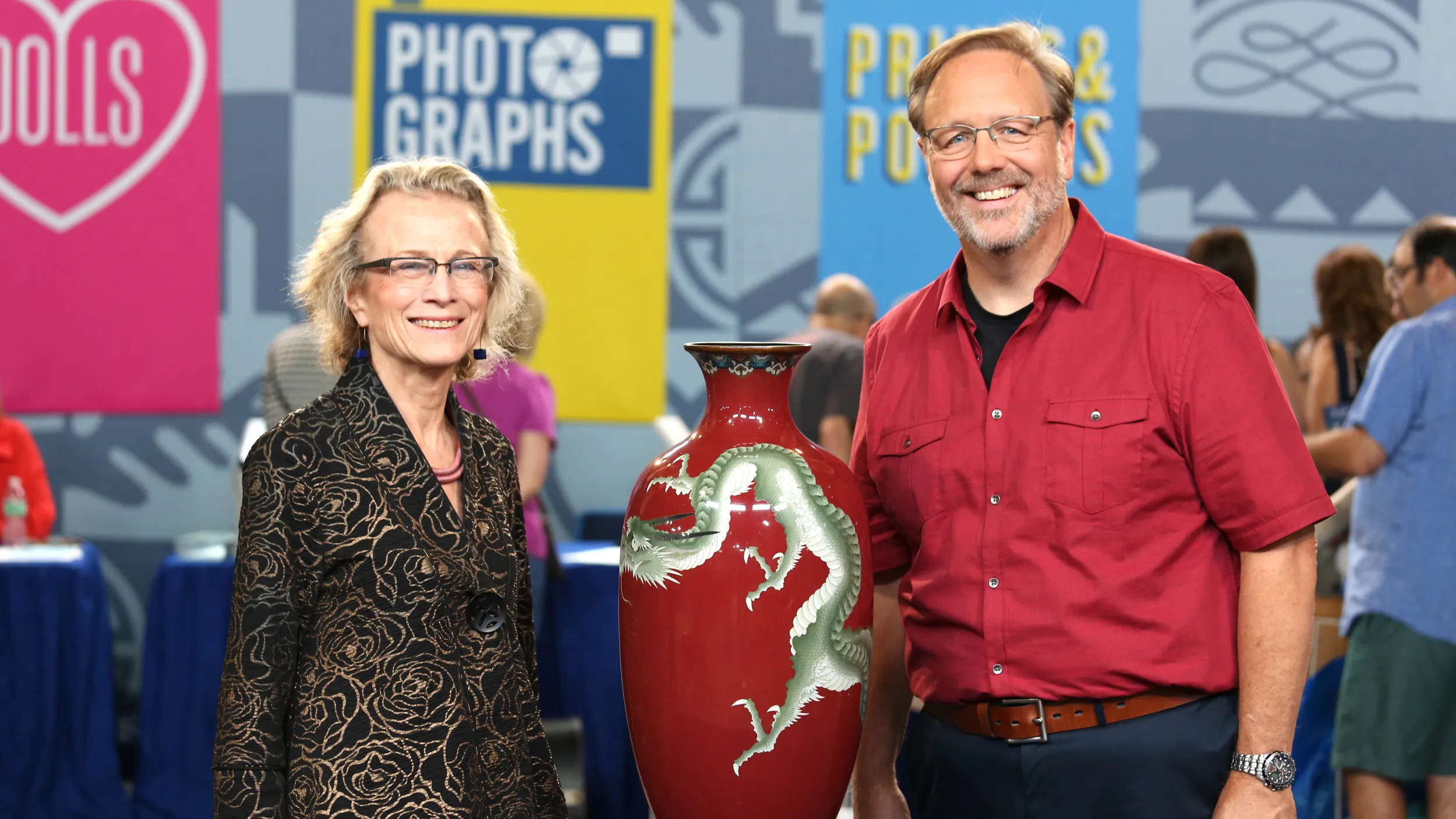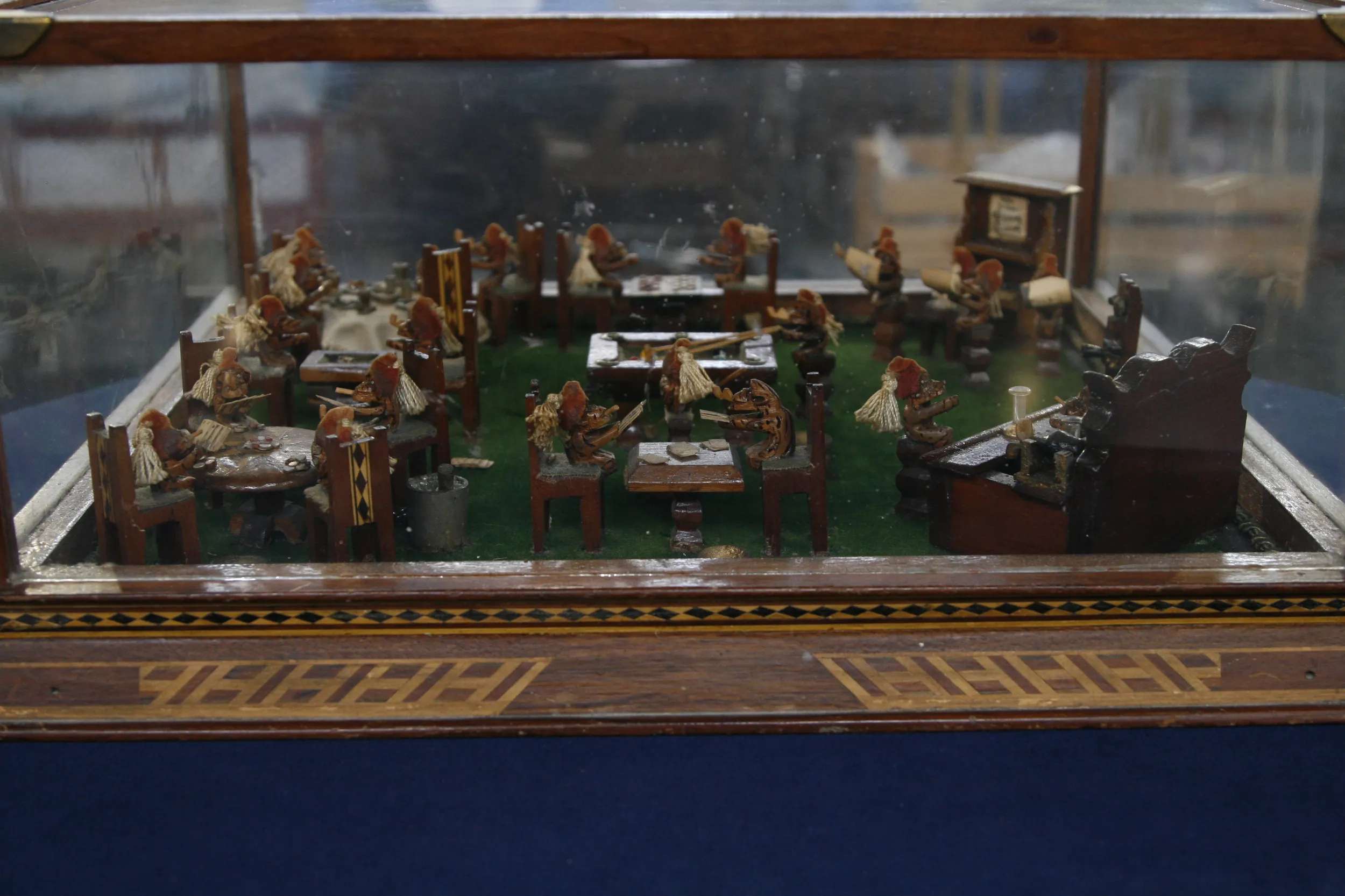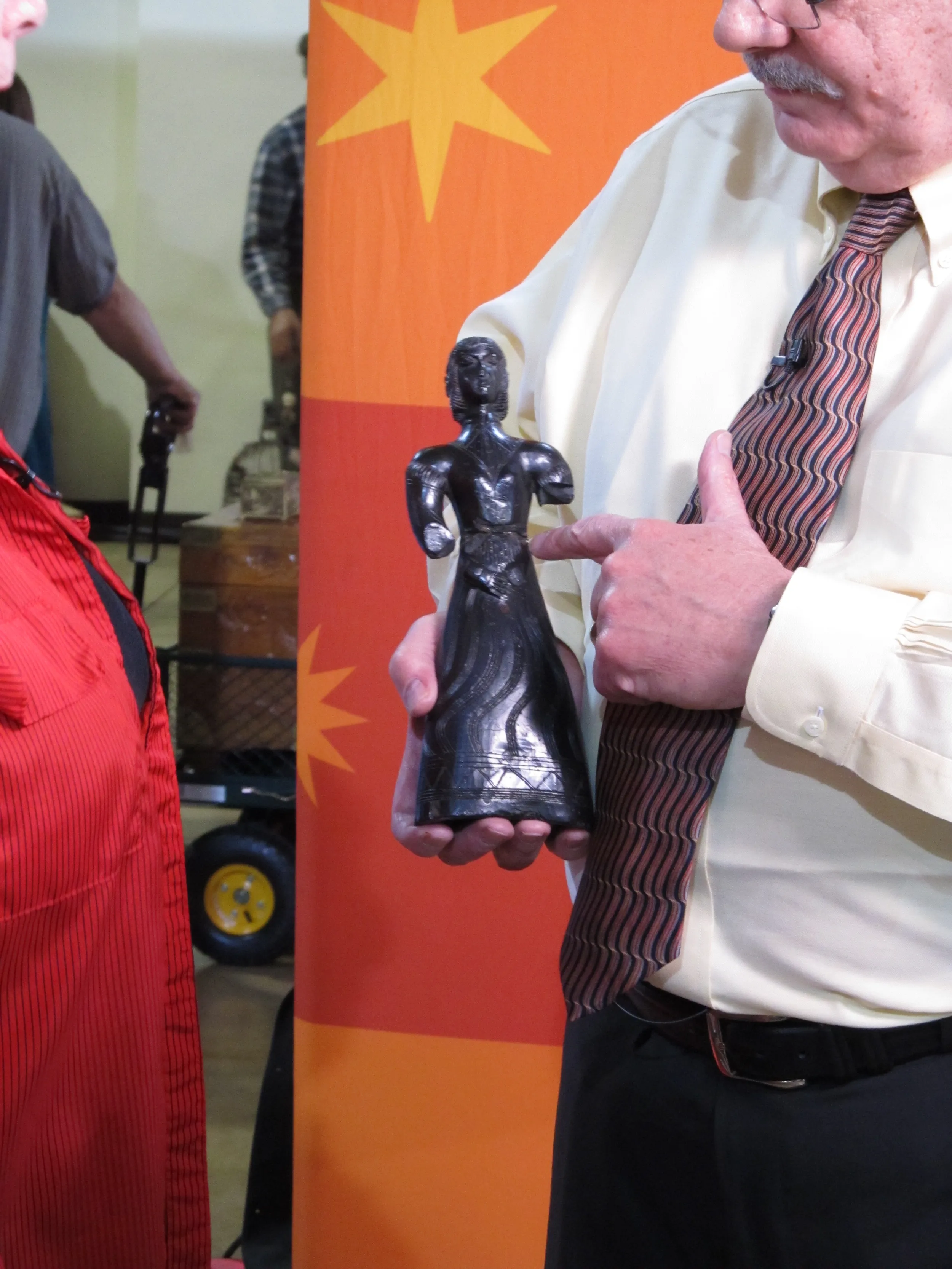GUEST: Well, about three years ago, in western New York, there was a tribal auction of tribal artifacts, and this was one of the items that was listed. I really liked the lines and the angles of it and paid $85 for it. Tried to do a little bit of research on it. I'm thinking it could be from Western Africa, I'm not sure.
APPRAISER: First of all, I want to tell you that authenticators are a little strange.
GUEST: Okay.
APPRAISER: When we look at an object, we don't look at it and say, "Why is this object real?" We say, "Why is this object wrong?", and we need to answer those questions. First of all, the overall surface you see up here on the nose, the forehead, down here on the breast, it's rubbed, the belly button, the end of the arms, down here on the legs. And then we see also, we've got the nose and the hole there. And also the hole here on the side. You got two holes in either of the pigtails that come down. One of the questions I had is, it was a little bit sharp on those holes. Because it would have had some red cloth or some metal rings and then red cloth in the ears.
GUEST: Okay.
APPRAISER: So that is something that we want to answer. You have, again, more wear down here, exactly where you'd expect it, on the base. So we have a couple of small questions on the holes, and we’re gonna think about that. This is supposed to come from the Bamana tribe, and the name of the piece is "Dyonyeni," D-Y-O-N-Y-E-N-I. The Bamana tribe is in Mali, West Africa. When you look at this object and you see the kind of wear, I feel very, very good about this being late 19th or early 20th century. This is the appropriate wood. What specifically the kind of wood is, I don't know-- we'd have to get it tested. And it's an object that's danced at the end of initiation ceremonies where the dancer holds it and then he puts it in the center of a circle, and it celebrates the end of the initiation.
GUEST: Okay.
APPRAISER: So now, does that make sense with the way it's handled? In fact, it does. The way the arms are worn, and the face, and again the breasts, so that makes sense. There's a couple of stylistic aberrations that we want to address, as well. The nose is a bit long. That can be answered by the fact that the neighboring tribe is Malinke, and Malinke have longer noses. Some of the "Dyonyeni" pieces have no eyes. This does have eyes. So that's an issue. Maybe it's a problem. Some of the pieces are female, which this is. Some are hermaphroditic, which would be both genders. Now, as an authenticator, I want to be exactly sure. So what I'm going to do is, I'm going to give you a value… which I believe this to be absolutely authentic. This piece at auction or for a good insurance value is going to be $30,000 to $40,000.
GUEST: Wow-- fantastic! Unbelievable.
APPRAISER: You didn't expect that, did you?
GUEST: Wow, no, I did not.
APPRAISER: I think this piece needs more work, and I'd want to really be able to have an authenticator study it. In the event it turns out not to be authentic, I think it's still an absolutely extraordinary figure and very beautiful. I would put $800 to $1,200 as an insurance value.
GUEST: Uh-huh.







